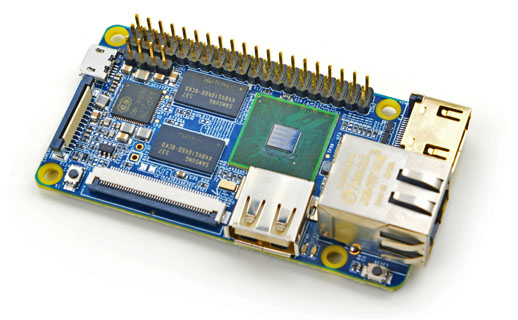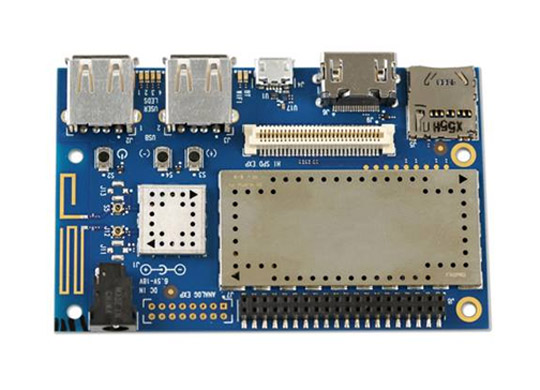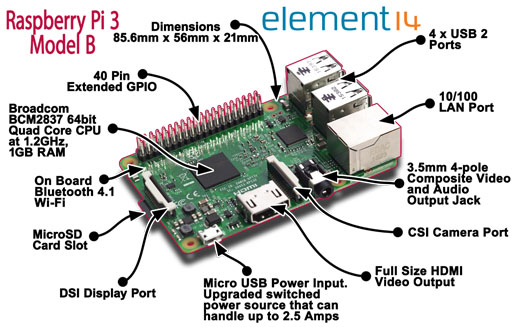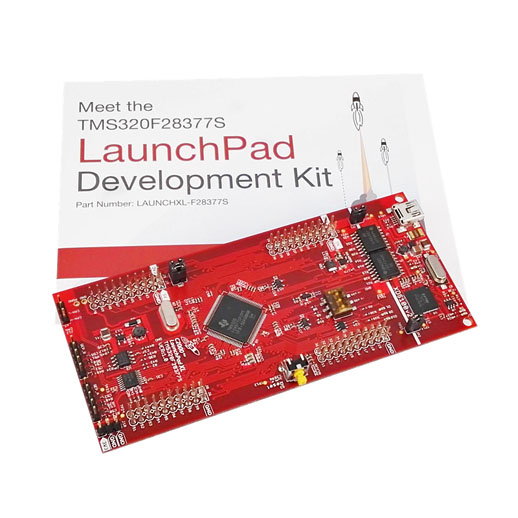By: Jim Harrison
When we cover “compute modules,” there is a small problem with nomenclature. We cover single-board computers in one section of our magazine and development kits in another section. Is the Raspberry Pi, for example, a dev kit or an SBC?
The distributors tend to classify all of the really low-cost boards as dev kits. Even element14 classifies its Raspberry Pi card as a dev kit, even though it has sold millions of them, and one would think that many of those are part of a product. In February 2016, the Raspberry Pi Foundation announced that they had sold 8 million devices. Luckily we have a third term to use — compute module. Intel likes to call its boards compute modules. I like it, too.
I have no idea how many different compute modules are being sold right now — I’m very sure it’s a large number. Let’s take a quick look at six of them. By the way, there are even cheaper cards than what we are going to cover here — the $5 Pi Zero and the $9 C.H.I.P.

The NanoPi2 ARM board by FriendlyARM features Samsung’s S5P4418 Quad Core A9 1.4-GHz processor and 1 Gbyte of 32-bit DDR3 RAM. It has two Micro-SD slots and AP6212 wireless, Bluetooth, BLE, and 802.11 b/g/n. The 75 x 40-mm board has an HDMI port, an LCD controller, and a camera input, along with USB 2.0, and it runs Android and/or Debian OSs. The device costs $32 and you can get one with a 7-inch capacitive LCD display for $70 (http://nanopi.io).

The DRAGONBOARD 410C from Arrow Development Tools uses a 1.2-GHz Snapdragon 410 processor with a quad-core Cortex-A53 core. It has PC-class graphics with support for advanced APIs, including OpenGL ES 3.0, OpenCL, DirectX, and content security. The 410c supports Android 5.1, Linux, and Windows 10 and offers 802.11 b/g/n 2.4 GHz, Bluetooth, USB 2.0, and GPS, all packed into a 85 x 54-mm board. It has 1 Gbyte of LPDDR3 533 MHz, 8 Gbytes of e.MMC, and a micro SD card slot. I/O includes 1080p, 30-f/s HD video playback and capture with H.264 (AVC), and 720p playback with H.265 (HEVC), and it has 13 MP camera support. The module costs $75 (goo.gl/aRG5iE).

The Raspberry Pi 2 Model B from www.raspberrypi.org uses a quad-core Broadcom BCM2837 64-bit processor running at 1.2 GHz. It has 1 Gbyte of RAM, Wi-Fi and Bluetooth Low Energy ports, Giga-bit Ethernet, and can source as much as 2.5 A. The card has four USB 2.0 ports, stereo audio output, a composite video port, and HDMI, along with a Micro SD port. The 85.6 x 56-mm module also has a camera port and DSI Display Port I/O. It costs only $35 each.

The ODROID-C2 single-board computer uses a 64-bit Amlogic quad Cortex-A53 core processor. The 85 x 56-mm card from hardkernel.com can function as a home theater set-top box, a general-purpose computer for web browsing, a controller for home automation, or a prototyping device for hardware tinkering. The card has 2 Gbytes of DDR3, a Gigabit Ethernet port, a Mali-450 GPU with Open-GL, and an HDMI port. It can run Ubuntu, Android, ARCHLinux, or Debian operating systems and has USB 2.0, an IR receiver, a eMMC5.0 HS400 flash storage socket, and a UHS-1 MicroSD card slot. Its cost is just $40.

The C2000 Delfino LaunchPad development kit from Texas Instruments is an inexpensive evaluation platform for high-performance digital control applications. This tool provides a great starting point for control systems such as industrial motor drives and automation, power line communications, and solar inverters. Based on the Delfino TMS320F28377S 32-bit floating-point microcontroller, the card provides 400 MIPS of total system performance between a 200-MHz C28x CPU and a 200-MHz real-time-control co-processor (CLA). The module has 1 Mbyte of flash, 16-bit/12-bit A/Ds, comparators, 12-bit D/As, delta-sigma sinc filters, PWMs, eCAPs, and CAN ports. It includes an isolated JTAG emulator for easy programming and debugging. The LAUNCHXL-F28377S is only $30 (goo.gl/b1DVPs).
I covered the recently introduced Joule module from Intel in this article. Intel has not released the price of this high-performance card, but it is expected to be more than $300 — putting it in a different ballgame from the others covered here. Worth considering, however.
Advertisement
Learn more about Arrow Electronicselement14IntelTexas Instruments





